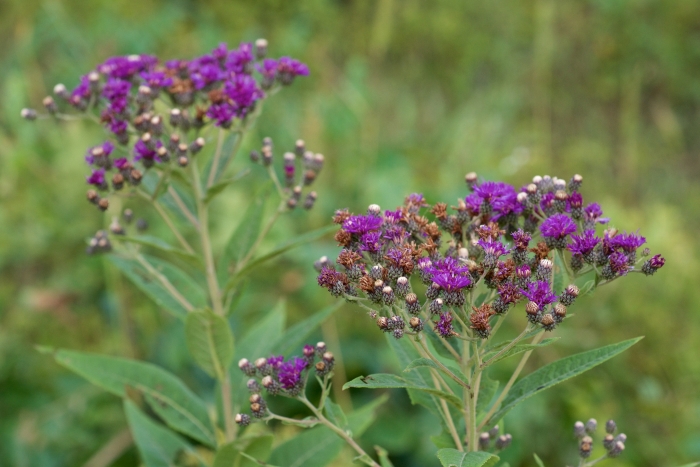Baldwin’s Ironweed
(Vernonia baldwinii)
Baldwin’s Ironweed (Vernonia baldwinii)
/
/

Eric Hunt
CC BY-SA 4.0
Image By:
Eric Hunt
Recorded By:
Copyright:
CC BY-SA 4.0
Copyright Notice:
Photo by: Eric Hunt | License Type: CC BY-SA 4.0 | License URL: https://creativecommons.org/licenses/by-sa/4.0 | Uploader: Eric in SF | Publisher: Wikimedia Commons | Title: Vernonia_baldwinii_2.jpg | Notes: {{Information| |Description=Pseudolysimachion longifolium (syn.: Veronica longifolia): Flower spikes |Source=Own photo, taken in Jutland. |Date=Jul 2001. |Author=[[User:Sten|Sten Porse]] |Permission={{self2|GFDL|cc-by-sa-2.5,2.0,1.0}} |other_versions= }} |




















































Estimated Native Range
Summary
Vernonia baldwinii, commonly known as Baldwin’s Ironweed, is a deciduous perennial herb native to the tallgrass prairies and open woodlands of the Central United States. It can grow up to 1.2 meters (3 feet 11 inches) tall, with stems that are densely tomentose (covered with fine hairs) and branched, giving it a robust and textured appearance. The plant features striking purplish, discoid inflorescences that bloom in late summer to early fall, adding a splash of color to the landscape when many other plants are starting to fade. The flowers are borne on short, tomentose peduncles and are known for their showiness and ability to attract butterflies and other pollinators.
Baldwin’s Ironweed is valued for its hardiness and low maintenance, as well as its ability to thrive in challenging environments, making it a popular choice for native plant gardens, prairie restorations, and naturalized areas. It is also used in border plantings for its height and vibrant flower color. This plant prefers full sun but can tolerate partial shade, and while it is adaptable to various soil types, it performs best in soils with medium to fast drainage. It is drought-tolerant once established, requiring low to medium amounts of water. Gardeners should be aware that in some conditions, it can spread aggressively through self-seeding, so management may be necessary to keep it in check.CC BY-SA 4.0
Baldwin’s Ironweed is valued for its hardiness and low maintenance, as well as its ability to thrive in challenging environments, making it a popular choice for native plant gardens, prairie restorations, and naturalized areas. It is also used in border plantings for its height and vibrant flower color. This plant prefers full sun but can tolerate partial shade, and while it is adaptable to various soil types, it performs best in soils with medium to fast drainage. It is drought-tolerant once established, requiring low to medium amounts of water. Gardeners should be aware that in some conditions, it can spread aggressively through self-seeding, so management may be necessary to keep it in check.CC BY-SA 4.0
Plant Description
- Plant Type: Herb
- Height: 3-5 feet
- Width: 1-1.5 feet
- Growth Rate: Moderate
- Flower Color: Purple
- Flowering Season: Summer, Fall
- Leaf Retention: Deciduous
Growth Requirements
- Sun: Full Sun
- Water: Low, Medium
- Drainage: Medium, Fast
Common Uses
Bee Garden, Bird Garden, Butterfly Garden, Deer Resistant, Drought Tolerant, Hummingbird Garden, Low Maintenance, Showy Flowers
Natural Habitat
Tallgrass prairies and open woodlands of the Central United States
Other Names
Common Names: Western Ironweed, Interior Ironweed, Ironweed, Inland Ironweed
Scientific Names: , Vernonia baldwinii, Vernonia baldwinii subsp. interior, Vernonia baldwinii var. baldwinii, Vernonia baldwinii var. interior, Vernonia interior, Vernonia interior var. baldwinii, Vernonia baldwinii f. baldwinii, Cacalia baldwinii, Cacalia gigantea var. baldwinii
GBIF Accepted Name: Vernonia baldwinii Torr.